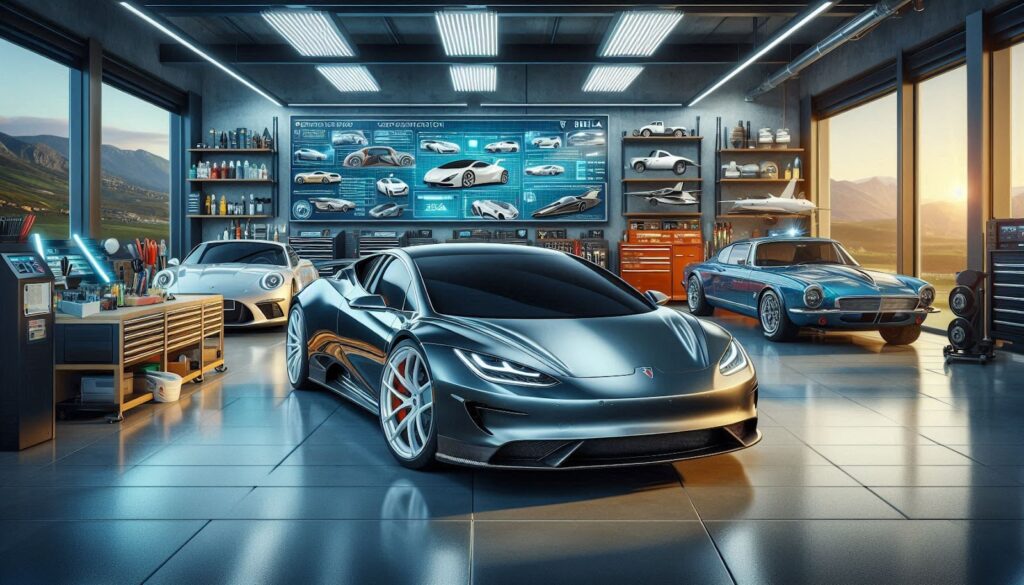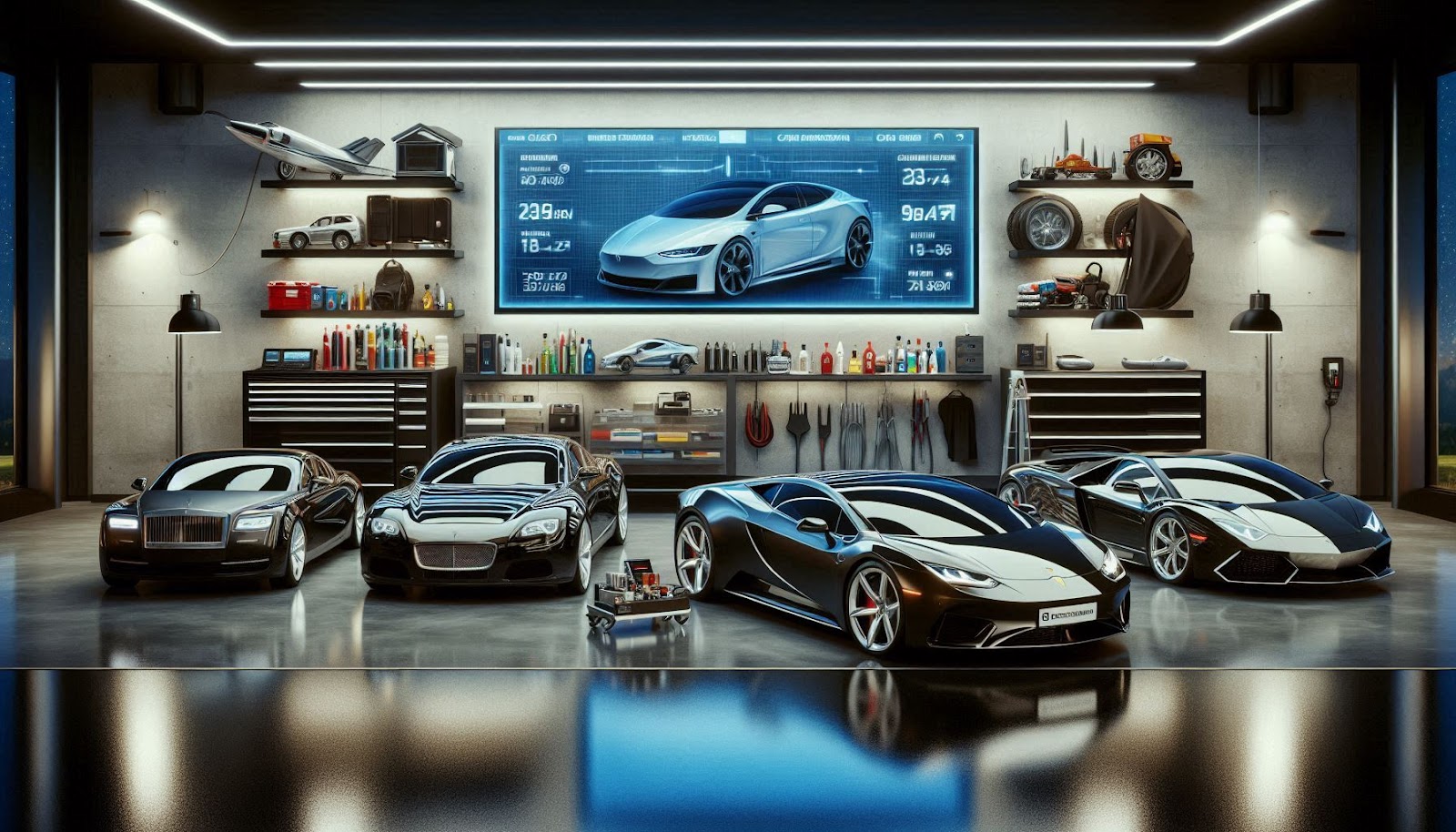In Dubai’s glittering landscape of architectural marvels, a new phenomenon is reshaping the automotive retail scene. As the emirate’s reputation for luxury and innovation continues to soar, commercial property for sale in Dubai within specialized auto districts has become the golden ticket for investors and automotive businesses alike. This transformation mirrors Dubai’s evolution from a pearl-diving settlement to a global hub of commerce, where traditional car showrooms are being reimagined as experiential destinations that blur the lines between retail, technology, and luxury living.
The integration of automotive excellence with premium real estate has created a unique ecosystem where Bentleys and buildings share equal billing in the race for attention. These specialized districts have become more than just places to buy and sell vehicles; they’ve evolved into comprehensive automotive lifestyle destinations that cater to the region’s insatiable appetite for luxury and innovation. The phenomenon has caught the attention of global investors, with property values in these districts experiencing unprecedented growth rates.
The concept of dedicated automotive districts has revolutionized how vehicles are marketed and sold in the Middle East. Unlike traditional industrial zones, these areas feature state-of-the-art facilities that combine showroom spaces with service centers, creating a seamless experience for both businesses and customers. The architectural design of these properties often reflects the prestigious brands they house, with facades that rival the sleekness of the latest sports cars.
As Dubai continues to position itself as a global leader in luxury retail, these automotive districts have become showcases of both vehicular and architectural innovation. The symbiotic relationship between high-end real estate and automotive retail has created a new standard for how cars are presented and sold in the 21st century. This convergence of industries has sparked a renaissance in commercial property development, where form and function dance in perfect harmony.
The Symphony of Steel and Glass: Architectural Innovation in Auto Showrooms
The evolution of automotive showrooms in Dubai’s specialized districts represents a masterclass in architectural innovation. Gone are the days of simple glass boxes displaying vehicles; today’s showrooms are architectural statements that tell stories through their design. These buildings employ cutting-edge materials and technologies to create environments that enhance the presentation of luxury vehicles while providing optimal functionality for business operations.
The integration of sustainable design principles has become a cornerstone of modern showroom architecture in Dubai. Solar panels seamlessly blend with sleek rooflines, while smart glass technologies adjust transparency based on sunlight intensity. These innovations not only reduce operational costs but also align with Dubai’s vision for a sustainable future. The use of advanced building materials allows for larger, column-free spaces that create unobstructed views of vehicle displays.
Lighting design in these facilities has evolved into an art form, with programmable LED systems that can create different moods and highlight specific vehicles. The interplay of natural and artificial light is carefully orchestrated to enhance the metallic finishes and curves of displayed vehicles. Some showrooms have incorporated holographic technology and augmented reality features into their architectural design, allowing for interactive customer experiences that blend the physical and digital worlds.
The exterior designs of these properties often incorporate elements from automotive design, with flowing lines and aerodynamic shapes that mirror the vehicles within. Façades featuring dynamic elements that move and change throughout the day have become increasingly popular, creating buildings that seem alive and in constant motion. These architectural features serve both aesthetic and practical purposes, often incorporating advanced climate control systems that maintain optimal conditions for vehicle display and human comfort.
Navigating the Fast Lane: Investment Dynamics in Auto District Real Estate
The investment landscape in Dubai’s automotive districts presents a fascinating study in market dynamics. Recent data shows that property values in these specialized zones have appreciated by an average of 15% annually over the past five years, outperforming many traditional commercial real estate sectors. This growth is driven by a perfect storm of factors, including Dubai’s position as a luxury retail hub, increasing demand for experiential retail spaces, and the emirate’s tax-efficient business environment.
Foreign investment in these districts has seen a remarkable surge, with international automotive brands and real estate investment trusts (REITs) allocating significant portions of their portfolios to these specialized properties. The average transaction value for automotive showroom properties exceeded AED 50 million in 2024, representing a 25% increase from the previous year. This trend reflects growing confidence in the long-term viability of Dubai’s automotive retail sector.
The rental yields in auto district properties have remained consistently strong, averaging between 7-9% annually, significantly higher than many other commercial property segments. This performance is supported by long-term lease agreements with prestigious automotive brands and the districts’ strategic locations within Dubai’s expanding transportation network. The stability of these returns has attracted institutional investors looking for reliable income streams in the luxury retail sector.
Investment strategies in these districts have evolved to include mixed-use developments that combine traditional showroom spaces with lifestyle amenities. These properties often incorporate high-end service centers, boutique offices, and exclusive client lounges, creating multiple revenue streams from a single location. The diversification of income sources has made these investments particularly resilient during economic fluctuations.

Revving Up Returns: The Economics of Auto District Development
The financial ecosystem surrounding Dubai’s automotive districts reveals a complex interplay of market forces and strategic planning. Development costs in these specialized zones typically range from AED 2,000 to 3,500 per square foot, depending on the level of customization and technological integration required. However, the premium nature of these properties allows developers to command lease rates that are 30-40% higher than conventional commercial spaces.
The economic impact extends beyond direct real estate returns, creating a multiplier effect throughout the local economy. Each new automotive district development generates an average of 200-300 direct jobs and an additional 500-700 indirect employment opportunities in related sectors. The presence of these specialized zones has also attracted ancillary businesses, from high-end automotive service providers to luxury lifestyle brands, creating diverse economic ecosystems.
Operating costs in these districts benefit from economies of scale and shared infrastructure, making them more efficient than standalone showroom properties. Advanced building management systems and sustainable design features have reduced energy consumption by an average of 40% compared to traditional commercial properties. These operational efficiencies contribute to higher net operating income and improved investment returns.
Market analysis indicates that properties in automotive districts have maintained occupancy rates above 90% even during economic downturns, demonstrating the resilience of this specialized real estate segment. The stability is attributed to the long-term nature of tenant agreements and the high barriers to entry for competing developments, which protect property values and rental income streams.
Digital Wheels: Technology Integration in Modern Auto Properties
The technological transformation of automotive district properties has redefined the boundaries between physical and digital retail spaces. Advanced building automation systems now control everything from climate and lighting to security and energy management, creating intelligent environments that adapt to usage patterns and environmental conditions. These smart building features have reduced operational costs by an average of 25% while improving the customer experience.
Virtual reality and augmented reality technologies have become integral components of modern showroom designs. Interactive displays and immersive visualization systems allow customers to customize vehicles and experience different configurations without physical inventory present. This technology integration has reduced the required physical display space by up to 30% while increasing customer engagement and sales conversion rates.
Data analytics and artificial intelligence systems embedded within these properties provide valuable insights into customer behavior and preferences. Heat mapping technology tracks visitor movements and engagement patterns, allowing retailers to optimize layout and display configurations. These systems have contributed to an average increase in sales efficiency of 35% compared to traditional showroom formats.
The integration of blockchain technology for property management and vehicle documentation has streamlined operations and enhanced security. Smart contracts automate lease agreements and maintenance schedules, while digital twin technology enables real-time monitoring of building systems and predictive maintenance. These technological innovations have reduced administrative overhead by an average of 40% while improving operational transparency.
Shifting Gears: Market Trends and Property Evolution
The evolution of automotive district properties reflects changing consumer preferences and retail trends. The average size of new showroom developments has increased by 40% over the past three years, with a greater emphasis on experiential spaces and customer amenities. This trend responds to the growing demand for immersive retail environments that go beyond traditional vehicle display functions.
Environmental sustainability has emerged as a key driver of property development in automotive districts. New projects increasingly incorporate green building standards, with 75% of recent developments achieving LEED certification. The focus on sustainability extends to the integration of electric vehicle charging infrastructure and renewable energy systems, positioning these properties for the future of automotive retail.
Market data indicates a shift toward more flexible space configurations that can accommodate changing retail formats and vehicle display requirements. Properties designed with modular layouts and adaptable infrastructure command premium rental rates, typically 15-20% higher than conventional showroom spaces. This flexibility has become particularly valuable as automotive brands expand their electric and autonomous vehicle offerings.
The integration of hospitality elements within automotive district properties has created new revenue opportunities and enhanced customer experience. Premium lounges, themed restaurants, and event spaces generate additional income streams while extending customer dwell time. Properties with these amenities report 25-30% higher per-square-foot revenues compared to traditional showroom-only facilities.
Beyond the Showroom: The Future Landscape of Auto Districts
The transformation of automotive districts continues to accelerate, driven by technological innovation and changing market dynamics. Emerging trends suggest a move toward mixed-reality showrooms that blend physical and digital experiences in unprecedented ways. These next-generation facilities are expected to reduce physical inventory requirements by up to 50% while maintaining or increasing sales effectiveness.
The integration of autonomous vehicle testing facilities and advanced charging infrastructure is reshaping property development requirements. New projects increasingly incorporate dedicated areas for autonomous vehicle demonstrations and electric vehicle charging hubs, with some facilities planning for vertical take-off and landing (VTOL) vehicle capabilities. These forward-looking design elements are expected to become standard features in premium automotive district properties.
The concept of automotive lifestyle destinations continues to evolve, with new developments incorporating luxury residences and boutique hotels alongside traditional showroom spaces. This trend toward mixed-use developments is expected to drive property values up by an additional 20-25% over the next five years, as these districts become self-contained luxury lifestyle hubs.
Research indicates that the next wave of automotive district development will focus on creating sustainable, smart city environments that showcase the future of mobility. These developments will incorporate advanced transportation infrastructure, renewable energy systems, and intelligent building management technologies, setting new standards for commercial property development in the automotive sector.
